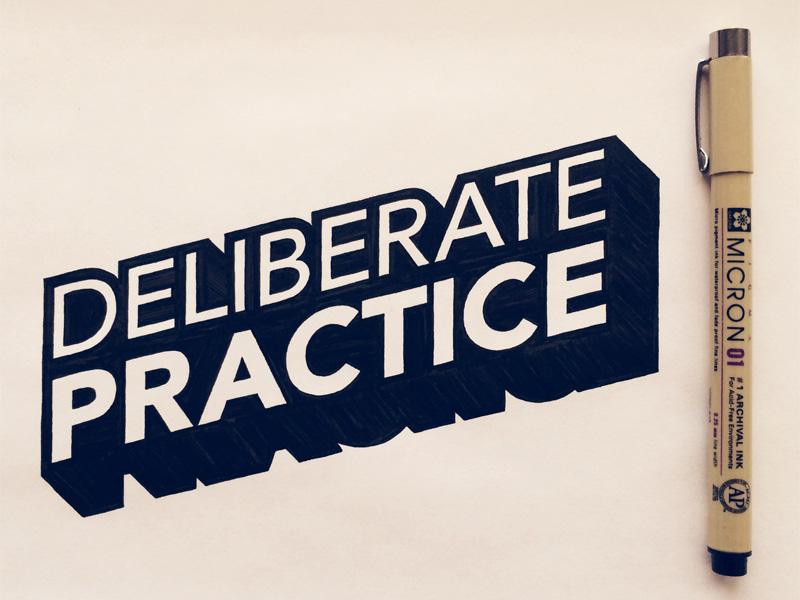Section 1 - The Neuroscience of Mental Endurance
Every engineer knows what system overload looks like.
When a GPU overheats or memory overflows, performance drops, not because the algorithm changed, but because the hardware couldn’t sustain the load.
Your brain works exactly the same way.
By the third or fourth round of a multi-hour ML interview, your mental “hardware” starts to throttle.
Your working memory weakens, your verbal clarity drops, and your ability to reason sequentially falters, even on problems you’ve solved hundreds of times before.
Most candidates mistake this for lack of preparation.
It’s not. It’s cognitive fatigue.
“ML interviews don’t just test what you know, they test how long your prefrontal cortex can perform under pressure.”
a. What Happens Inside Your Brain During Multi-Round Interviews
Let’s break down the neuroscience of fatigue.
Your brain runs on glucose and oxygen; it’s about 2% of your body weight but consumes 20% of your energy.
During intense mental tasks like ML interviews, your prefrontal cortex, responsible for reasoning, decision-making, and working memory, works at near-maximum capacity.
That part of your brain helps you:
- Break down a system design prompt.
- Justify trade-offs between models.
- Recall obscure loss function details.
- Communicate clearly while thinking out loud.
Each of those micro-decisions burns metabolic energy.
When glucose dips or oxygen flow slows (which happens naturally after 60–90 minutes of sustained focus), your neural efficiency drops.
The result?
- Lag in recall, you “know” the answer but can’t retrieve it fast enough.
- Verbal slowdown, speech clarity decreases, filler words increase.
- Cognitive tunneling, you get stuck on subproblems and can’t zoom out.
- Anxiety amplification, fatigue triggers cortisol, which reduces confidence.
“Cognitive fatigue mimics incompetence, but it’s just depletion.”
This is why even top-tier ML engineers sometimes fumble in later rounds. Their knowledge hasn’t changed, their energy architecture has.
Check out Interview Node’s guide “The Psychology of Confidence: How ML Candidates Can Rewire Their Interview Anxiety”
b. The “Heat Map” of Cognitive Load in ML Interviews
Different types of rounds strain your brain differently.
| Interview Type | Primary Brain Region Activated | Energy Drain Factor | Symptoms of Fatigue |
| Coding Round | Prefrontal cortex (logic + sequencing) | 🔥 High | Reduced debugging speed, tunnel vision |
| ML System Design | Parietal + frontal integration (abstraction) | 🔥🔥 Very High | Confused architecture reasoning, slow trade-off recall |
| Behavioral Round | Temporal + limbic regions (memory + emotion) | 🔥 Medium | Overexplaining, emotional fatigue |
| Case Study/Business Round | Frontal–temporal interplay (context switching) | 🔥🔥 Very High | Loss of coherence, rushing through ideas |
After two or three of these rounds, your neurons are literally firing slower.
That’s not a metaphor, it’s measured as reduced dopaminergic efficiency, meaning your motivation and focus circuits temporarily underperform.
“Mental fatigue isn’t a lack of willpower, it’s a temporary systems slowdown.”
c. The “Cognitive Drift” Effect
A study from Stanford’s Neuroscience Lab on decision fatigue showed that working memory decays by nearly 20% after 2 hours of continuous reasoning tasks.
That’s equivalent to solving ML design questions on 80% of your true capability, a gap big enough to turn strong answers into mediocre ones.
The scary part?
Most engineers don’t realize it’s happening.
You’ll think, “Why did that feel harder than usual?” or “Why couldn’t I explain that clearly?”
That’s cognitive drift, the slow, invisible drop in reasoning precision that makes Round 4 feel like you’re solving through fog.
“Cognitive drift is the silent rejection reason no one tells you about.”
d. Why Stamina Is More Predictive Than Skill
FAANG recruiters quietly know this:
candidates who maintain composure and structured thinking through the final rounds have a higher long-term success rate than those who spike early.
It’s not just about skill mastery, it’s about cognitive durability.
Because multi-round interviews mirror real-world engineering conditions, long problem-solving sessions, context switching, mental resilience during debugging.
Your interview performance, therefore, becomes a neural proxy for how you’ll handle production pressure.
That’s why top hiring panels value endurance so highly.
It signals:
- Consistency under fatigue
- Focus resilience
- Recovery speed after mental errors
These traits correlate strongly with leadership and senior engineering potential.
e. The Science of Building Endurance
The great news: cognitive stamina is trainable, just like muscle memory.
Neuroscience research calls it attentional control adaptation, the process of conditioning your brain to maintain performance longer before fatigue sets in.
Three proven techniques to build it:
- Intervaled Deep Work:
Practice coding or reasoning in 45–60 minute bursts with 10-minute breaks.
This trains your attention span to sustain intensity over time. - Controlled Cognitive Stress Exposure:
Simulate stress by doing practice interviews back-to-back, under mild fatigue.
Over time, your stress response (cortisol release) reduces, you get calmer under load. - Recovery Routines:
Between interviews, use micro-recovery strategies, deep breathing, movement, hydration, or simply looking out a window for 60 seconds.
Small resets restore neural oxygenation faster than passive scrolling.
“Cognitive endurance doesn’t come from grinding more, it comes from recovering better.”
Check out Interview Node’s guide “How to Practice ML Interviews Alone: The Science of Effective Self-Preparation”
f. Real Example: The Google ML Candidate Who “Ran Out of RAM”
Take Arjun, a senior ML engineer who aced the first three Google interviews, system design, coding, and research ML, but stumbled in the behavioral round.
Not because he didn’t prepare, but because his cognitive RAM was full.
By Hour 4, he couldn’t recall simple examples from his own projects.
He later said, “It was like my thoughts were lagging.”
After practicing focus intervals and structured breaks for three weeks, he redid his interviews, and passed.
His final-round interviewer commented, “You seemed sharp all the way through.”
Nothing changed technically.
He just optimized his neural endurance.
Key Takeaway
Interview fatigue isn’t a weakness, it’s biology.
And biology can be trained.
You can condition your brain, manage glucose and stress, and design cognitive rest cycles that mimic high-performance athletes’ recovery patterns.
“Interview stamina is your cognitive operating system, optimize it like your codebase.”
Section 2 - Training Stamina Like a Model: Iterative Endurance Practice
Every ML engineer understands the concept of model training: you start with a prototype, feed it data, monitor loss, tune parameters, and refine over multiple epochs until performance stabilizes.
What if you applied that same scientific rigor to your brain during interview prep?
Because here’s the truth:
You can’t brute-force endurance. You have to train it iteratively, just like you train a neural network.
“The human brain learns endurance the same way an ML model learns accuracy, through structured repetition, feedback, and controlled recovery.”
Let’s build your human fine-tuning framework.
a. Reframing Endurance as a Learning Problem
When you first start practicing ML interviews, you’re training multiple mental subsystems simultaneously:
- Analytical reasoning (logic + problem-solving)
- Memory recall (theoretical knowledge)
- Communication fluency (verbal reasoning)
- Stress regulation (emotional control)
Each has its own “training curve.”
If you overload one too early, say, doing five mock interviews in a day, you’ll hit cognitive overfitting: short-term gains, long-term burnout.
Instead, you must use a gradual curriculum learning approach, just like in deep learning where models train on simpler tasks first and progressively handle complex ones.
b. Week-by-Week Interview Endurance Plan
Think of this as a 4-week neural optimization loop, where each week increases your mental capacity by simulating realistic interview conditions.
🧠 Week 1 - Baseline Calibration
Goal: Measure your current cognitive stamina.
- Conduct one 90-minute mock per day.
- Record when fatigue first sets in (mental fog, loss of articulation, fidgeting).
- Log how many minutes it takes for your focus to degrade by 30%.
You’re not training yet, you’re profiling your mental model performance.
Example Log:
| Day | Duration | Drop Point (min) | Symptoms | Recovery Time |
| Monday | 90 min | 65 | Verbal slowdown | 10 min |
| Tuesday | 90 min | 70 | Lost thread of thought | 8 min |
This becomes your baseline dataset, your starting loss curve.
“You can’t optimize what you don’t profile.”
⚙️ Week 2 - Progressive Overload
Goal: Stretch your endurance threshold.
- Do 2 mocks back-to-back (coding + behavioral).
- Between sessions, allow only 10 minutes of recovery.
- Practice mental resets between topics, breathing, walking, note summarization.
This phase teaches your brain context switching under mild fatigue, simulating real multi-round conditions.
Track your “second session loss”, the decline in performance between first and second mocks.
Your goal: reduce that delta by 50% by week’s end.
Example:
If your first session felt like 100% focus and your second felt like 70%, by week’s end aim for 85–90%.
That’s mental stamina calibration.
🔁 Week 3 - Full-Loop Simulation
Goal: Simulate a 4–5 round interview day.
- Schedule 4 mocks:
- Coding
- ML System Design
- Behavioral
- Case or Product Thinking
- Space them 45–60 minutes apart.
Don’t check your phone or emails in between, treat breaks as mental recovery, not distraction.
At this stage, track qualitative endurance:
- How consistent were your answers by the final round?
- Did you retain structure, pace, and clarity?
- Were you still able to justify trade-offs confidently?
If your Round 4 performance matches your Round 1 reasoning structure within ±10%, you’ve built operational endurance stability.
“Mental stability across rounds is your validation score.”
Check out Interview Node’s guide “The Hidden Metrics: How Interviewers Evaluate ML Thinking, Not Just Code”
🧩 Week 4 - Consolidation and Recovery Optimization
Goal: Strengthen performance under partial fatigue and improve recovery time.
- Alternate heavy and light days (mimic training cycles).
- Day 1: 4 rounds (full loop).
- Day 2: Light review or single reflection session.
- Day 3: 2 intense mocks.
- Day 4: Recovery.
During this week, experiment with micro-recovery techniques between rounds:
- Box breathing (4-4-4-4 cycle).
- Hydration reset (250ml water every 45 minutes).
- Mental white space: 2–3 minutes of eyes-closed visualization.
This phase builds your neural elasticity, the ability to recover clarity quickly between rounds.
“Interview endurance isn’t about avoiding fatigue, it’s about shortening recovery lag.”
c. Translating ML Training Concepts to Human Endurance
| ML Concept | Human Equivalent | Purpose |
| Epochs | Repeated mock interview cycles | Consolidate mental learning |
| Batch Normalization | Pre-round rituals (breathing, hydration, notes) | Stabilize mental inputs |
| Regularization | Cognitive breaks + rest days | Prevent burnout |
| Learning Rate | Intensity of practice | Balance stress with retention |
| Validation Loss | Real interview results | Measure transfer of training |
When you train like a model, you learn to treat fatigue as feedback, not failure.
If your second session performance dips, that’s not defeat, it’s a signal to adjust rest, nutrition, or pacing.
“High performers don’t train harder, they train like scientists.”
d. Real Example: Iterative Conditioning in Action
Consider Mei, an ML engineer preparing for Meta.
In her first week, she could sustain deep reasoning for ~90 minutes before clarity dipped.
After three weeks of progressive overload (simulated multi-round loops, recovery cycles, and pacing techniques), she completed a 5-hour interview day without drop-off in reasoning coherence.
Her post-hoc reflection:
“It wasn’t that I knew more, it’s that I stopped leaking focus.”
That’s the power of training like a model, each iteration doesn’t just add skill, it compounds endurance.
Key Takeaway
Cognitive endurance is not innate, it’s built through structure, simulation, and feedback.
Train your mental network with the same discipline you’d apply to an ML system.
- Define your baseline (initial loss).
- Simulate realistic loads (multi-round mocks).
- Regularize with recovery (breaks + breathing).
- Validate your stability (real interviews).
You’re not just preparing for interviews, you’re fine-tuning your cognitive system for performance under uncertainty.
“Interview stamina isn’t about lasting longer, it’s about degrading slower.”
Check out Interview Node’s guide “The Art of Debugging in ML Interviews: Thinking Out Loud Like a Pro”
Section 3 - Managing Energy Across Rounds: The Focus–Recovery Cycle
Every ML candidate prepares for questions, few prepare for energy.
But here’s the secret top performers understand:
Even the most brilliant mind becomes average when tired.
Your ability to sustain clarity, focus, and composure during five or six rounds of interviews depends less on IQ and more on energy architecture, how well you manage your neural fuel, attention rhythm, and micro-recovery cycles.
“Interviews aren’t marathons of intelligence. They’re sprints of sustained clarity.”
This section gives you the same kind of focus–recovery blueprint that elite athletes and executives use, adapted to the cognitive intensity of ML interviews.
a. The Focus–Recovery Cycle: A Brain’s Natural Performance Rhythm
Your brain operates in 90-minute ultradian cycles, periods of peak focus followed by natural dips in attention.
During those dips, neural circuits need brief recovery time to clear adenosine buildup (a chemical linked to fatigue).
Ignore these dips, and you’ll experience “mental lag”, slower recall, irritability, and diminished reasoning precision.
That’s why long interviews often feel exponentially harder by Round 4, you’ve ignored 2–3 recovery windows.
The solution: structure your performance around the Focus–Recovery Cycle.
| Phase | Duration | Goal | Strategy |
| Focus | 60–90 mins | Maximize clarity and reasoning depth | Controlled breathing, hydration, posture |
| Recovery | 5–15 mins | Restore neural energy | Physical movement, glucose regulation, mental reset |
“Cognitive endurance is less about stretching focus, and more about honoring recovery.”
b. Phase 1 - Pre-Round Activation
Think of this as your “warm-up” before each round, preparing your brain to switch from passive mode to active reasoning mode.
Here’s your pre-round checklist (10–15 minutes before the next interview):
✅ 1. Breathing Reset
Use the 4-7-8 method:
- Inhale for 4 seconds.
- Hold for 7 seconds.
- Exhale slowly for 8 seconds.
This lowers cortisol (stress hormone) and sharpens prefrontal activity.
✅ 2. Micro-Visualization
Imagine the interview flow, introductions, problem framing, reasoning, conclusion.
Visual priming boosts mental agility and narrative control.
✅ 3. Nutritional Prep
Eat a small, low-glycemic snack (like almonds, banana, or dark chocolate).
Avoid sugary foods, they spike glucose, then crash it mid-round.
✅ 4. Mindset Cue
Before joining, repeat:
“This is one more round, not the final round.”
This keeps your pressure perception low and attention distributed.
You’re not trying to energize, you’re trying to stabilize.
c. Phase 2 - In-Round Energy Regulation
Once you’re in the flow of the interview, the challenge shifts from energy generation to energy conservation.
Here are high-ROI habits to extend cognitive endurance in-session:
🔹 1. Control Your Pace
Speak at ~75% of your natural speed.
This reduces verbal energy expenditure and gives your brain milliseconds of extra processing, preventing panic pauses.
🔹 2. Externalize Thinking
Draw diagrams, note intermediate ideas.
Externalization reduces working memory load, freeing energy for reasoning instead of recall.
🔹 3. Use “Pause Points”
Every 3–5 minutes, take a half-second micro-pause.
These 2-second breaks act as neural breathers, enough to regulate focus without breaking flow.
🔹 4. Reframe Fatigue as Familiarity
When your brain feels tired, it interprets it as stress. Reframing fatigue as “my neurons are warming up” converts anxiety into calm persistence.
“The best candidates don’t hide fatigue, they manage it invisibly.”
d. Phase 3 - Post-Round Decompression
Between rounds, your recovery quality determines how fast you rebound for the next.
Instead of reaching for your phone or scrolling Slack (which floods your brain with dopamine noise), use structured decompression.
Here’s a 5-minute Neural Recovery Protocol:
🔹 Minute 1 - Movement Reset
Stand up, stretch arms overhead, rotate shoulders.
This increases blood flow to the frontal lobe by up to 15%.
🔹 Minute 2 - Hydration Reset
Drink a glass of water.
Even 1% dehydration reduces attention span by 10–15%.
🔹 Minute 3–4 - Cognitive Offload
Write one sentence:
“What felt strong? What needs refinement?”
No deep analysis, just externalizing memory fragments prevents cognitive carryover.
🔹 Minute 5 - Visual Reset
Look at a distant object (through a window or across the room).
This relaxes eye muscles and resets the visual cortex, reducing overall neural tension.
“Five minutes of real rest is worth thirty minutes of scattered distraction.”
e. Managing Glucose, Oxygen, and Flow
Endurance = energy × efficiency.
Your brain’s three performance fuels are oxygen, glucose, and dopamine.
Mismanage any one, and your focus collapses.
| Resource | What Supports It | What Depletes It |
| Glucose | Nuts, fruit, whole grains | Processed sugar, long fasting |
| Oxygen | Controlled breathing, posture | Shallow chest breathing |
| Dopamine | Achievement tracking, short wins | Social media, multitasking |
To stay sharp:
- Keep your desk air fresh (open windows between rounds).
- Use cold water on wrists or face to reoxygenate quickly.
- Celebrate micro-successes (“I handled that coding round calmly”), small dopamine hits sustain focus.
f. Example: The Anthropic ML Candidate’s “Recovery Stack”
Nikhil, an ML engineer interviewing with Anthropic, used to fade by Round 4.
After applying a focus–recovery cycle, he built his own “interview recovery stack”:
- Pre-round: 4-7-8 breathing + 1 banana.
- In-round: Slower pacing + diagrams.
- Post-round: Hydration + 1-line reflection + visual reset.
After two weeks of practice, he completed a 5-hour loop “without that end-of-day fog.”
His feedback from the hiring manager?
“You were the most consistent candidate we saw all week.”
The Takeaway
Energy isn’t infinite, but it’s manageable.
When you control your physiological and cognitive cycles, your brain stops burning out mid-interview.
Instead of collapsing after Round 3, you’ll enter the later stages with calm, structured clarity.
“You don’t need to fight fatigue, you need to design around it.”
Check out Interview Node’s guide “How to Approach Ambiguous ML Problems in Interviews: A Framework for Reasoning”
Conclusion - The Science of Staying Sharp When It Matters Most
If there’s one truth every ML engineer discovers the hard way, it’s this:
multi-round interviews don’t reward the most intelligent candidate, they reward the most sustainable one.
You could have mastered every algorithm, every ML architecture, every metric… but if your focus collapses after Round 3, your preparation doesn’t matter.
That’s because long interview loops are endurance tests disguised as evaluations.
They measure not just what you know, but how well you can think when you’re mentally drained, emotionally taxed, and time-constrained.
“Interview success isn’t about peak performance, it’s about sustained clarity under fatigue.”
a. Why Stamina Is the Real Competitive Edge
In 2025 and beyond, interview difficulty has plateaued, but interview length and complexity have risen, especially for ML roles that combine coding, design, and business reasoning.
That means endurance, cognitive, emotional, and communicational, is now a meta-skill.
The engineers who consistently get offers from FAANG and AI-first startups share a hidden habit:
they train for stamina the way athletes train for consistency.
They simulate long sessions, track energy dips, apply pre-round rituals, and recover deliberately.
In essence, they build their own mental feedback loops, exactly the kind that make models more stable after each epoch.
Check out Interview Node’s guide “How to Build a Feedback Loop for Continuous ML Interview Improvement”
b. The Three Dimensions of Interview Endurance
To perform like a professional across 4–6 rounds, you need to train all three layers of endurance:
| Dimension | Focus Area | Why It Matters |
| Cognitive | Attention, memory, reasoning | Prevents performance drop in later rounds |
| Physiological | Sleep, hydration, nutrition | Keeps neural and metabolic energy stable |
| Emotional | Confidence, resilience, composure | Enables clear thinking under social stress |
Neglect one, and the others degrade.
Sustain all three, and your performance curve flattens instead of crashing.
“True intelligence isn’t how fast you think, it’s how long you can think clearly.”
c. The System for Sustained Performance
Here’s your endurance architecture, distilled into a repeatable 5-step loop:
| Phase | Objective | Practical Action |
| Preparation | Build stamina foundation | Simulate 4+ mock rounds per week |
| Activation | Enter focus rhythm | Use breathing + visualization 10 min before each round |
| Regulation | Maintain consistency | Speak slower, externalize thoughts, hydrate |
| Recovery | Reset between rounds | Move, hydrate, reflect briefly, reset mindset |
| Reflection | Strengthen loop | Review focus trends weekly, identify fatigue triggers |
This loop transforms you from a candidate who “survives” interviews into one who controls the tempo.
d. The FAANG vs. Startup Reality Check
If you’re interviewing at FAANG, your biggest challenge is repetition fatigue.
If you’re targeting AI-first startups, your challenge is context-switching fatigue.
Both require tailored endurance:
- FAANG: Practice structure retention → reduces re-decision energy.
- Startups: Practice cognitive resets → builds recovery agility.
Learn both, and you’ll develop bimodal stamina, the ability to stay structured under predictability and creative under chaos.
“Endurance in FAANG means consistency; endurance in startups means adaptability.”
Final Takeaway
Cognitive endurance is not about pushing harder, it’s about recovering smarter.
Your mental battery isn’t infinite.
It needs rhythm: charge, discharge, recover.
When you learn to regulate energy like a system, not just react to it, your focus, reasoning, and confidence stay stable.
You don’t panic when fatigue sets in because you’ve built the system to handle it.
That’s how great engineers win interviews they once thought were impossible.
“You can’t hack endurance. You can only build it, one cycle at a time.”
Top FAQs - Building Interview Stamina for ML Interviews
1. How can I simulate multi-round fatigue during prep?
Do mock loops that mimic FAANG schedules, 4–5 rounds in one sitting, each 45–60 minutes long, with only 10-minute breaks.
Track when you start losing clarity or making careless mistakes.
That’s your cognitive fatigue threshold, train to extend it weekly.
2. What’s the best way to recover between back-to-back rounds?
Use a 3-minute recovery ritual:
- Step away from your screen.
- Stretch or walk.
- Take 3 deep breaths (4–7–8 method).
- Hydrate and note one key reflection (“What felt strong?”).
Even a short reset helps your brain clear neural noise and restore focus.
3. How much does nutrition actually impact interview performance?
A lot.
Your brain runs on glucose, and unstable levels cause “mental crashes.”
- Eat low-glycemic meals (oats, quinoa, fruit) 1–2 hours before.
- Avoid sugar-heavy snacks right before the interview.
- Stay hydrated, dehydration alone can reduce cognitive speed by 10–15%.
4. Should I have caffeine before interviews?
Yes, but strategically.
Drink caffeine 45–60 minutes before Round 1, not immediately before.
Skip it after Round 3, too much caffeine elevates cortisol and reduces calm reasoning.
5. How do I stay calm during long behavioral rounds?
Behavioral fatigue is emotional, not cognitive.
Reset by focusing on story structure, not performance.
Use the STAR method (Situation, Task, Action, Result) to anchor your thoughts and avoid overexplaining.
6. How can I train for FAANG-style multi-day interviews?
Use staggered simulation:
- Day 1: 2 coding + 1 design mock.
- Day 2: 1 design + 1 behavioral.
This mimics multi-day fatigue, forcing you to recover overnight, the real test of endurance is sustained energy across days, not hours.
7. How do I prevent burnout during intense preparation weeks?
Use the 2:1 rule, for every 2 days of heavy interview prep, have 1 light day of reflection, review, or rest.
Mental overtraining triggers burnout just like overtraining muscles.
“Recovery isn’t a reward, it’s part of training.”
8. Can meditation or mindfulness actually improve interview stamina?
Yes.
Mindfulness reduces the brain’s baseline noise level, which improves working memory and attention control.
Even 10 minutes of mindfulness per day increases endurance by training your prefrontal cortex to resist fatigue triggers.
9. How can I measure improvement in interview stamina?
Track these metrics weekly:
- Number of rounds completed before noticeable fatigue.
- Drop in performance (self-rated) between Round 1 and Round 4.
- Recovery time between sessions.
When that performance drop shrinks and recovery time shortens, your stamina’s improving.
10. How much sleep do I need before interview day?
At least 7.5–8 hours, ideally ending 90 minutes before your interview time (to align with a full sleep cycle).
Avoid staying up late revising, your recall and composure drop by up to 25% with even mild sleep loss.
Final Insight:
Interview stamina isn’t built overnight.
It’s built through rhythm, training focus, practicing recovery, and understanding how your brain truly performs under pressure.
When you stop treating interviews like “one big test” and start treating them like “a system of energy management,” everything changes.
Your confidence stabilizes.
Your reasoning sharpens.
Your communication slows down, but your clarity speeds up.
“You can’t fake energy. But you can train for endurance. And that’s what wins in the final round.”






